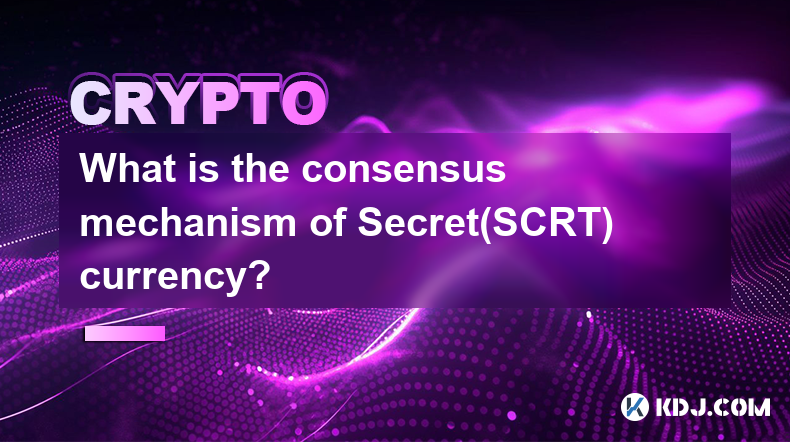-
 Bitcoin
Bitcoin $99,560.3949
2.67% -
 Ethereum
Ethereum $1,951.2300
6.28% -
 Tether USDt
Tether USDt $1.0001
0.01% -
 XRP
XRP $2.2064
3.09% -
 BNB
BNB $613.8040
1.33% -
 Solana
Solana $154.0293
4.38% -
 USDC
USDC $0.9999
-0.01% -
 Dogecoin
Dogecoin $0.1830
5.58% -
 Cardano
Cardano $0.7176
5.29% -
 TRON
TRON $0.2508
1.79% -
 Sui
Sui $3.7465
10.63% -
 Chainlink
Chainlink $14.8531
7.06% -
 Avalanche
Avalanche $20.9166
5.91% -
 Stellar
Stellar $0.2736
4.31% -
 Bitcoin Cash
Bitcoin Cash $414.7250
13.08% -
 UNUS SED LEO
UNUS SED LEO $8.8023
1.31% -
 Shiba Inu
Shiba Inu $0.0...01340
4.45% -
 Hedera
Hedera $0.1858
4.96% -
 Toncoin
Toncoin $3.1179
3.29% -
 Hyperliquid
Hyperliquid $21.6150
1.58% -
 Litecoin
Litecoin $92.0306
0.75% -
 Polkadot
Polkadot $4.2501
7.01% -
 Monero
Monero $298.2987
4.40% -
 Dai
Dai $1.0002
-0.02% -
 Bitget Token
Bitget Token $4.3415
0.41% -
 Ethena USDe
Ethena USDe $1.0004
0.00% -
 Pi
Pi $0.6197
6.41% -
 Pepe
Pepe $0.0...09091
11.37% -
 Bittensor
Bittensor $400.4217
9.80% -
 Uniswap
Uniswap $5.2244
7.18%
What is the consensus mechanism of Secret(SCRT) currency?
Secret's (SCRT) privacy-centric consensus mechanism, Proof-of-Stake with Threshold Signature (PoS with TS), combines validator selection based on stake with anonymous block signing via Threshold Signature, enhancing transaction anonymity and network integrity.
Dec 08, 2024 at 06:46 pm

Consensus Mechanism of Secret (SCRT) Currency
Secret (SCRT) is a privacy-first blockchain network that enables users to conduct transactions and store data securely and anonymously. At the heart of Secret's privacy-preserving features lies a unique consensus mechanism known as the "Proof-of-Stake with Threshold Signature" (PoS with TS) protocol.
Proof-of-Stake (PoS)
Proof-of-Stake (PoS) is a consensus algorithm that differs significantly from the traditional Proof-of-Work (PoW) mechanism used in popular blockchains like Bitcoin. In PoS, validators are chosen based on their stake in the network, rather than their computational power.
- Network Security: Proof-of-Stake incentivizes validators to act honestly and maintain the integrity of the network. Validators with a larger stake have a higher probability of being selected to validate blocks and earn rewards, thereby making it costly for malicious actors to compromise the blockchain.
- Reduced Energy Consumption: PoS is significantly more energy-efficient than PoW. Instead of relying on intensive computational power, it utilizes validators' staked coins to secure the network. This approach drastically reduces the energy consumption associated with block validation, making it a more environmentally friendly option.
Threshold Signature (TS)
Threshold Signature (TS) is a cryptographic technique that enables multiple parties to collectively sign a message without revealing their individual private keys. This feature plays a vital role in Secret's privacy-enhancing capabilities.
- Enhanced Transaction Anonymity: TS allows validators to sign blocks anonymously while still ensuring the validity of the transaction. Each validator generates a partial signature that contributes to the overall block signature, making it impossible to trace individual validators' involvement in the process.
- Prevention of Double-Signing: TS prevents validators from signing the same block twice, thus maintaining the integrity of the blockchain and preventing malicious actors from manipulating the network. Each validator's partial signature is unique and cannot be used to sign another block, effectively eliminating the risk of double-spending.
Integration of PoS with TS
Secret's consensus mechanism combines Proof-of-Stake with Threshold Signature to create a robust and privacy-centric blockchain network.
- Validator Selection: Validators are chosen based on their stake in the network, ensuring that the most invested participants have a greater influence on block validation.
- Block Signing: When a validator is selected to propose a block, they generate a partial TS signature. This signature is combined with the partial signatures of other validators to form a complete block signature, ensuring the anonymity of the validators involved.
- Block Validation: The complete block signature is then verified by other validators in the network. If the signature is valid, the block is added to the blockchain.
Conclusion
The Proof-of-Stake with Threshold Signature consensus mechanism employed by Secret (SCRT) currency plays a pivotal role in its privacy-preserving nature. By combining PoS and TS, Secret ensures that transactions and data stored on its blockchain remain confidential and secure, empowering users with enhanced anonymity and protection.
Disclaimer:info@kdj.com
The information provided is not trading advice. kdj.com does not assume any responsibility for any investments made based on the information provided in this article. Cryptocurrencies are highly volatile and it is highly recommended that you invest with caution after thorough research!
If you believe that the content used on this website infringes your copyright, please contact us immediately (info@kdj.com) and we will delete it promptly.
- World Liberty Finance Takes a Large Step to Increase Its Focus on the Stablecoin Market
- 2025-05-08 19:15:12
- Only Tokens With Utility Will Survive the Next Market Crash
- 2025-05-08 19:15:12
- Meme Coin Mania: Can PEPE's Momentum Drive It to Crypto Stardom?
- 2025-05-08 19:10:12
- Remittix (RTX) Protocol Attracts Whales, Shiba Inu (SHIB) and Cardano (ADA) Also See Accumulation
- 2025-05-08 19:10:12
- Mantle Network is entering a major transformation.
- 2025-05-08 19:05:13
- Remittix Is on a Solid Path to $1 with Its Payment Solutions Filling the Gap Left Behind by Ripple and Stellar Lumen
- 2025-05-08 19:05:13
Related knowledge

Is Ethereum smart contract call fee high? How to optimize costs?
May 08,2025 at 09:35am
Is Ethereum Smart Contract Call Fee High? How to Optimize Costs? The world of Ethereum smart contracts has revolutionized the way we think about decentralized applications and blockchain technology. However, one of the most frequently discussed topics within this realm is the cost associated with executing smart contract calls. In this article, we will ...

Is Ethereum Layer2 fee low? How to use it cheaper?
May 08,2025 at 03:56am
The question of whether Ethereum Layer 2 solutions offer lower fees and how to use them more economically is a topic of great interest within the cryptocurrency community. Ethereum's Layer 2 solutions have been developed to address the high transaction fees and scalability issues associated with the main Ethereum network. In this article, we will delve ...

How to calculate Ethereum network fee? How to reduce transaction costs?
May 08,2025 at 02:15am
Understanding and managing Ethereum network fees is crucial for anyone involved in transactions on the Ethereum blockchain. The network fee, also known as gas fee, is the amount of Ether (ETH) required to successfully conduct a transaction or execute a smart contract on the Ethereum network. Calculating these fees and finding ways to reduce them can sig...

What is Ethereum Gas Fee? How to optimize Gas Fee to save costs?
May 08,2025 at 03:43am
Ethereum gas fees are a crucial aspect of interacting with the Ethereum blockchain. Understanding and optimizing these fees can significantly impact the cost-effectiveness of transactions and smart contract interactions. In this article, we will delve into what Ethereum gas fees are, how they are calculated, and provide detailed strategies for optimizin...

How to perform MOVE cross-chain transfer? What to do if the gas fee is too high?
May 07,2025 at 08:03pm
Introduction to MOVE Cross-Chain TransferCross-chain transfers have become an essential part of the cryptocurrency ecosystem, allowing users to move assets between different blockchain networks. One of the popular protocols for achieving this is the MOVE cross-chain transfer. This article will guide you through the process of performing a MOVE cross-cha...

How is the DYDX liquidation price calculated? How is the forced liquidation mechanism?
May 08,2025 at 06:49am
The DYDX liquidation price and the forced liquidation mechanism are crucial aspects of trading on the dYdX platform, a decentralized exchange that allows users to trade perpetual contracts. Understanding these concepts is essential for managing risk and maximizing potential returns. In this article, we will delve into the details of how the DYDX liquida...

Is Ethereum smart contract call fee high? How to optimize costs?
May 08,2025 at 09:35am
Is Ethereum Smart Contract Call Fee High? How to Optimize Costs? The world of Ethereum smart contracts has revolutionized the way we think about decentralized applications and blockchain technology. However, one of the most frequently discussed topics within this realm is the cost associated with executing smart contract calls. In this article, we will ...

Is Ethereum Layer2 fee low? How to use it cheaper?
May 08,2025 at 03:56am
The question of whether Ethereum Layer 2 solutions offer lower fees and how to use them more economically is a topic of great interest within the cryptocurrency community. Ethereum's Layer 2 solutions have been developed to address the high transaction fees and scalability issues associated with the main Ethereum network. In this article, we will delve ...

How to calculate Ethereum network fee? How to reduce transaction costs?
May 08,2025 at 02:15am
Understanding and managing Ethereum network fees is crucial for anyone involved in transactions on the Ethereum blockchain. The network fee, also known as gas fee, is the amount of Ether (ETH) required to successfully conduct a transaction or execute a smart contract on the Ethereum network. Calculating these fees and finding ways to reduce them can sig...

What is Ethereum Gas Fee? How to optimize Gas Fee to save costs?
May 08,2025 at 03:43am
Ethereum gas fees are a crucial aspect of interacting with the Ethereum blockchain. Understanding and optimizing these fees can significantly impact the cost-effectiveness of transactions and smart contract interactions. In this article, we will delve into what Ethereum gas fees are, how they are calculated, and provide detailed strategies for optimizin...

How to perform MOVE cross-chain transfer? What to do if the gas fee is too high?
May 07,2025 at 08:03pm
Introduction to MOVE Cross-Chain TransferCross-chain transfers have become an essential part of the cryptocurrency ecosystem, allowing users to move assets between different blockchain networks. One of the popular protocols for achieving this is the MOVE cross-chain transfer. This article will guide you through the process of performing a MOVE cross-cha...

How is the DYDX liquidation price calculated? How is the forced liquidation mechanism?
May 08,2025 at 06:49am
The DYDX liquidation price and the forced liquidation mechanism are crucial aspects of trading on the dYdX platform, a decentralized exchange that allows users to trade perpetual contracts. Understanding these concepts is essential for managing risk and maximizing potential returns. In this article, we will delve into the details of how the DYDX liquida...
See all articles
























![[2025.05.08] The two routes of Bitcoin continue to be observed, and gold is still bullish. [2025.05.08] The two routes of Bitcoin continue to be observed, and gold is still bullish.](/uploads/2025/05/08/cryptocurrencies-news/videos/routes-bitcoin-continue-observed-gold-bullish/image_500_375.webp)



























































